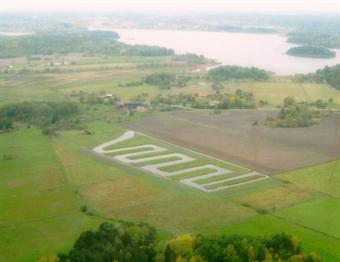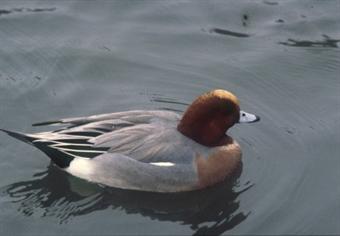The Wetland at Harka Gård in Sweden

The artificial wetland at Harka Gård
The wetland at Harka Gård in Sweden was created by the renowned wildlife biologist Professor Vidar Marcström to address a problem affecting the Baltic Sea. The Baltic has been badly affected by pollution, including nitrogen and phosphorus run-off from agriculture. To reduce this pollution some coastal watercourses have been dammed, to allow settlement of the pollution inland. However, dams can harm the migrations needed by many spawning fish.
The Marcström method is to excavate a broad and shallow canal in parallel with the main water flow, with dams at the start to allow filling and at the end to allow emptying. The main stream can retain some water, but the bulk of the flow is slowed to deposit nutritive nitrogen and phosphorus where they enrich vegetation in the canal. The superb growing conditions for plants and associated invertebrates feed fish and ducks, both of which can be harvested to gain income. Moreover, the entire canal can be drained to remove vegetation as farmland compost when it becomes too dense.

The wetland is ideal habitat for dabbling ducks
This aquaculture technique is more flexible in operation than more natural wetlands. It is most suitable for the very flat conditions found only on flood-plains, because the canal is only 40-50 cm deep to maximise plant growth. However, where the method is possible, Swedish authorities have been prepared to give 90% grants towards construction.